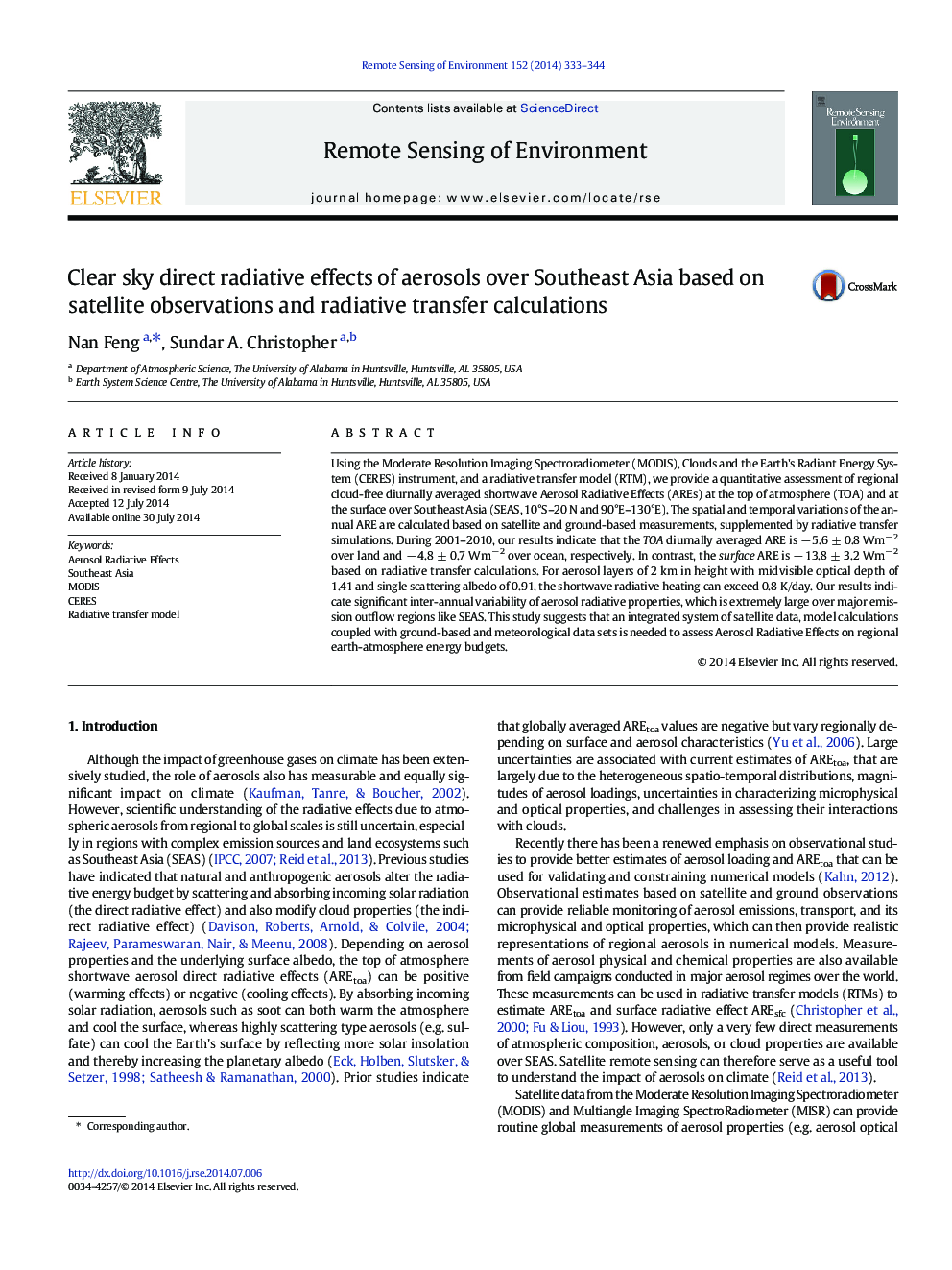| Article ID | Journal | Published Year | Pages | File Type |
|---|---|---|---|---|
| 6346354 | Remote Sensing of Environment | 2014 | 12 Pages |
â¢Satellite, ground observations and radiative transfer model are applied.â¢We quantify aerosols' impacts on the SW radiation balance over SE Asia.â¢We estimate the vertical profiles of heating rates due to biomass burning aerosols.â¢The total diurnally averaged AREtoa and AREsfc are â 4.2 Wmâ 2 and â 13.8 Wmâ 2.â¢The elevated smoke aerosols lead to radiative heating of 0.8 K/day of the layer.
Using the Moderate Resolution Imaging Spectroradiometer (MODIS), Clouds and the Earth's Radiant Energy System (CERES) instrument, and a radiative transfer model (RTM), we provide a quantitative assessment of regional cloud-free diurnally averaged shortwave Aerosol Radiative Effects (AREs) at the top of atmosphere (TOA) and at the surface over Southeast Asia (SEAS, 10°S-20 N and 90°E-130°E). The spatial and temporal variations of the annual ARE are calculated based on satellite and ground-based measurements, supplemented by radiative transfer simulations. During 2001-2010, our results indicate that the TOA diurnally averaged ARE is â 5.6 ± 0.8 Wmâ 2 over land and â 4.8 ± 0.7 Wmâ 2 over ocean, respectively. In contrast, the surface ARE is â 13.8 ± 3.2 Wmâ 2 based on radiative transfer calculations. For aerosol layers of 2 km in height with midvisible optical depth of 1.41 and single scattering albedo of 0.91, the shortwave radiative heating can exceed 0.8 K/day. Our results indicate significant inter-annual variability of aerosol radiative properties, which is extremely large over major emission outflow regions like SEAS. This study suggests that an integrated system of satellite data, model calculations coupled with ground-based and meteorological data sets is needed to assess Aerosol Radiative Effects on regional earth-atmosphere energy budgets.
